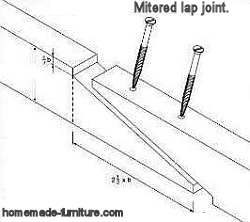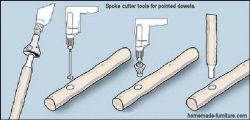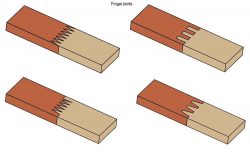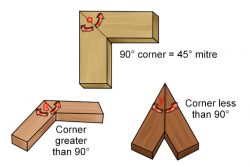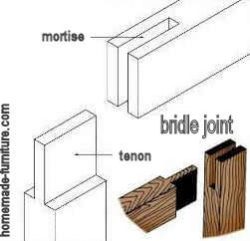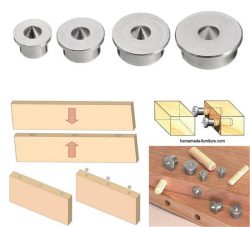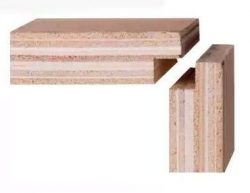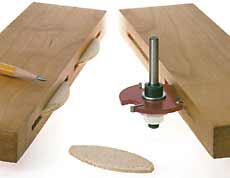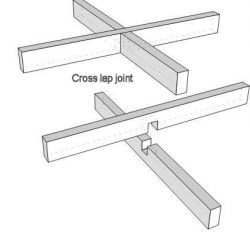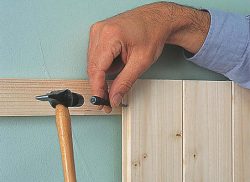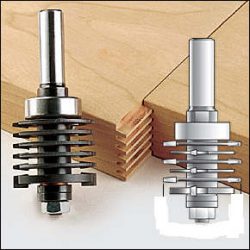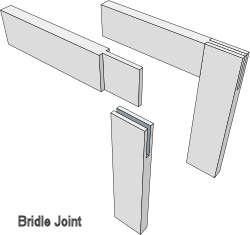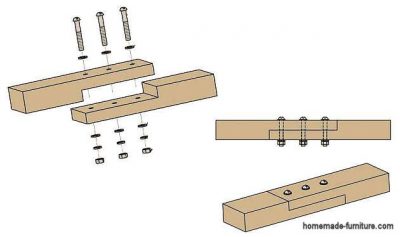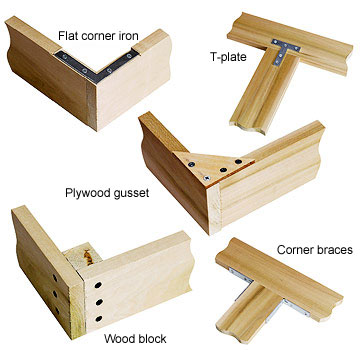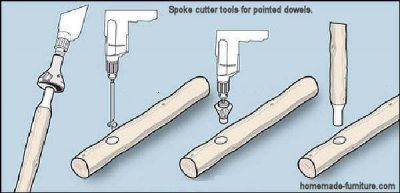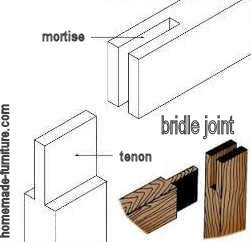Joinery for timber and lumber, woodworking techniques.
Some of the most popular methods for joining pieces of wood together.
These are classic methods for joinery.
Most of our woodworking instructions and drawings are meant for assembly with self tapping screws.
Nevertheless you can improve most woodworking plans by changing to a more conventional assembly method.
Methods for joinery, woodworking basics.
See the explanation of each joinery method if you click the links.
- A butt joint is one of the weakest methods for wood joinery.
The butt joints are nevertheless widely used because of their simplicity.
One plank or slat is butted against another piece, that’s all there is to it. - The lap joint is made bij one piece of wood overlapping the other.
Not very strong, even though these woodworking joints can be made stronger by embedding each part in the other. - The bridle joint or open tennon is also called several other names.
Other names for bridle joints are open mortise and tenon, or tongue and fork joints. - Dovetail woodjoints are strong and nice looking.
Fingers with a trapezoid shape grip together providing axcellent tensile strength.
The dovetail is also sometimes called a swallow tail joint.
This joinery method is almost standard procedure when you make drawers for cabinets. - Dowels are often used in woodworking.
This method for joinery is easy and you do not need special tools.
That said, if you want to make hidden joinery with dowels then you need a dowel alignment tool.
Those pins are cheap and almost an essential part of your toolbox. - When two pieces of wood are connected in an angle s butt joint then it is called a mitre joint.
Even though these woodworking joints are not very strong.
The mitred joint is often used to make nice looking edges and corners. - Clamp wood between planks to make timber longer.
Professional joinery techniques.

Slightly more complex woodworking joints.
- A finger joint is also sometimes called box joint.
Fingers interlock to provide strength in two directions.
You need specials tools to make this type of woodworking joints. - Like the previous finger joint, a dovetail wood joint is made with a special machine.
This wood joinery is also a box joint with a bit more strength than the finger joint. - A woodjoint is called Dado joint when a straight slot is made in one piece where another piece slides in.
Another name for this joinery is box joint, derived from the main purpose for these joints.
This connection method is for instance used when making shelves in cupboards and kitchens.
When the slot is cut with the grain then this is called a groove joint. - Floorboards and panels are often connected with a tongue and groove wood joinery.
Each plank has a groove on one side and a tongue on the other.
Both pieces fit together.
It is possible to nail the planks together while hiding the nail heads.
Drive the nails in the tongue where the head will be covered by the groove in the next board. - When one piece of timber, the stub, fits into a corresponding hole, then it’s called a mortise and tenon woodjoint.
A very common method in assembly of furniture. - For a crosslap woodjoint you have to remove pieces from each timber at the crossing point.
- For the lengthwise connection of timber is the scarf or splice joint.
Usefull when large constructions are made and all timber is too short.
These are not strong woodworking joints at all, therefore the splice joint is often reinforced with planks on both sides.

